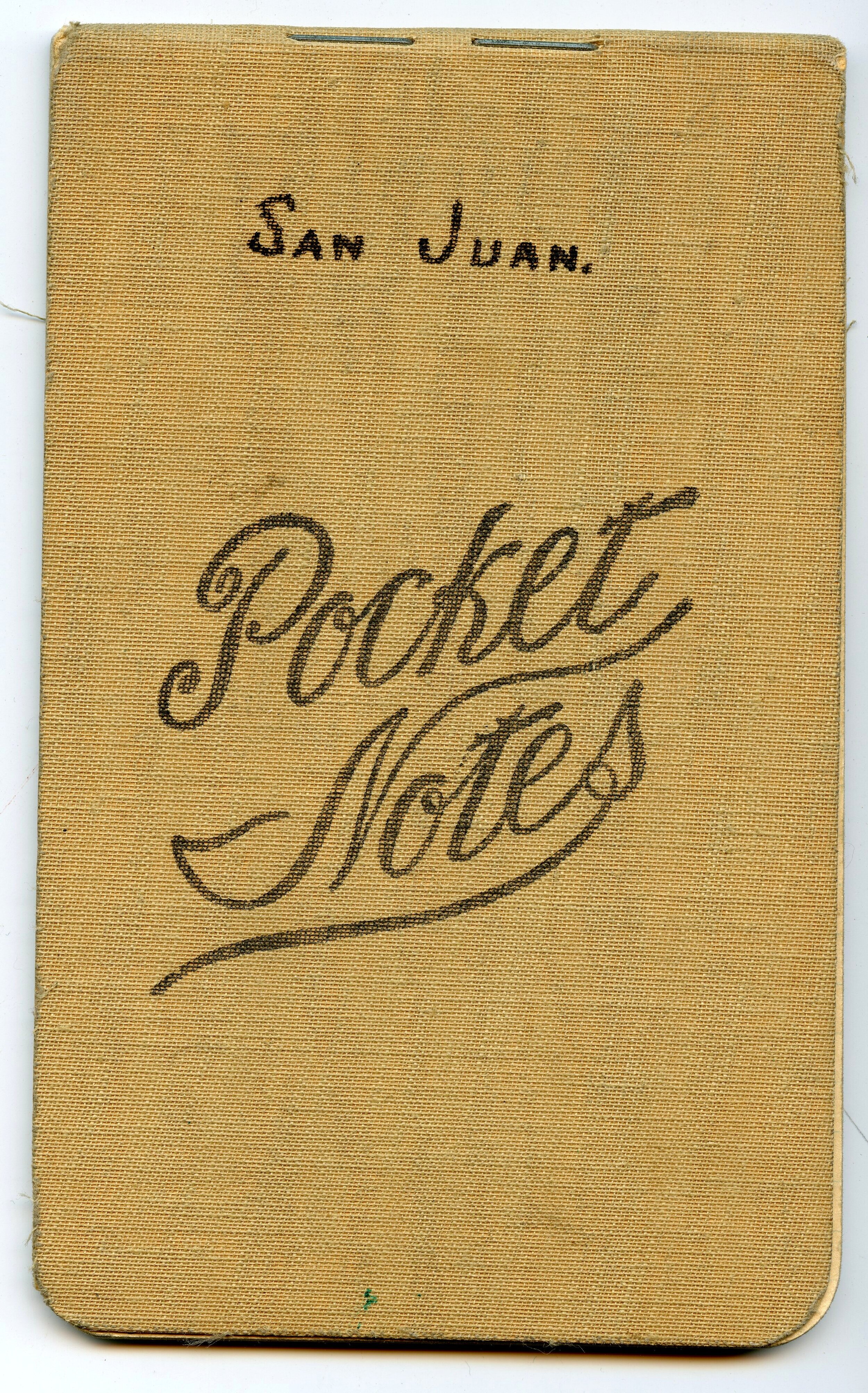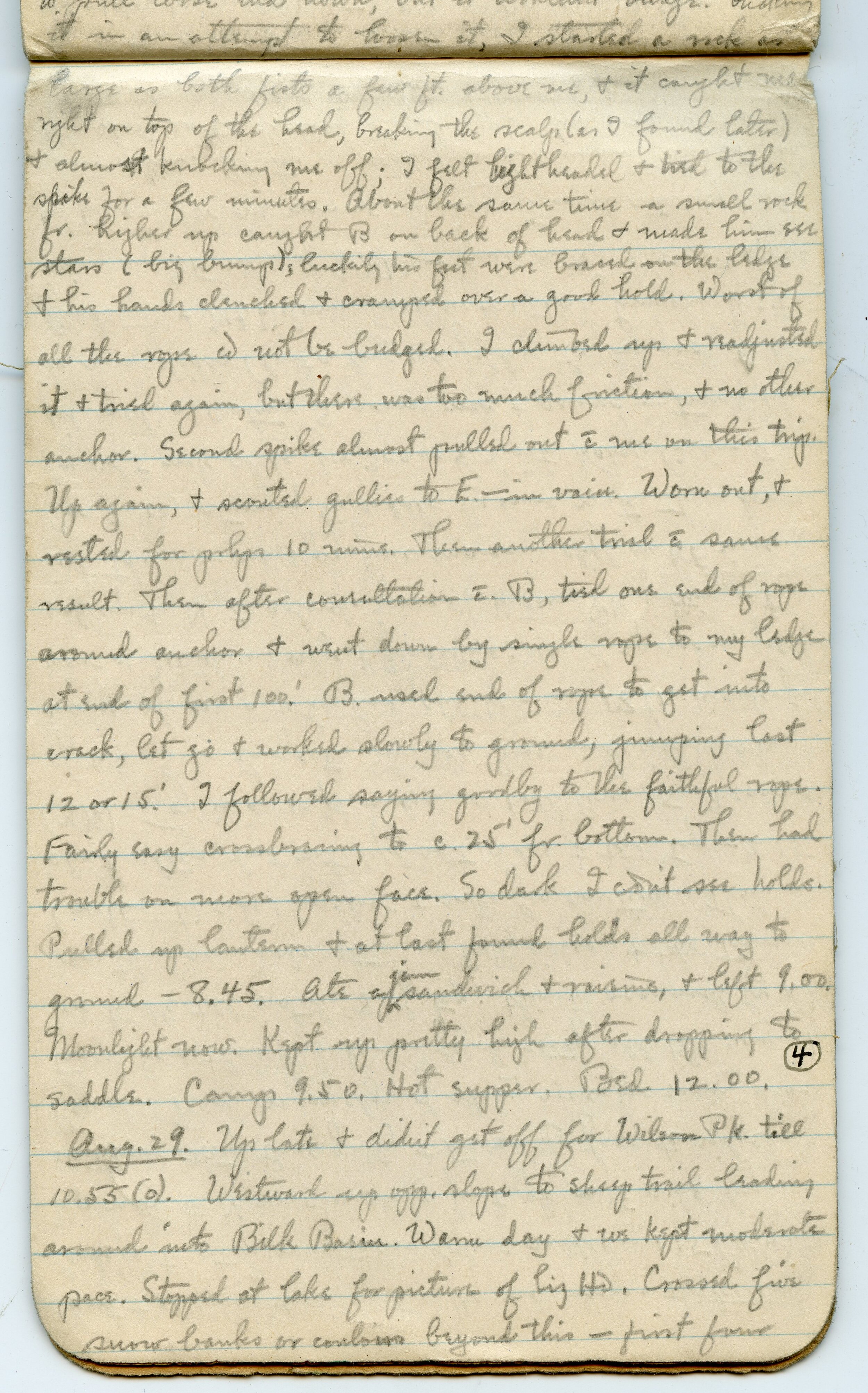Have you heard about “self-powered” or “human-powered” adventure? Wondering what that is? In a nutshell, it is an adventure that involves more of people and less of machines. The idea being that it has less impact on the environment.
This is not a new idea. Many adventurers practiced this back in the day. Albert Ellingwood was one such adventurer. Like many adventurers today though, he may have been thinking more about his limited funds than the environment.
“In 1916 Albert led five others on a long walk.”
This long walk was a trip to the Sangre de Cristos to climb the three remaining peaks of Colorado’s last unclimbed 14,000-foot peaks (“14ers”). The members of this party were two men, including Ellingwood, and four women. Two additional members of the party, Rea Ellingwood (Albert’s wife) and Sarah Davis, brought gear and provisions on the train from Colorado Springs, joining them in Crestone. The rest took the long way around.
Most of the party consisted of staff and faculty from Colorado College. On Saturday, July 8th, Albert Ellingwood, Eleanor Bartlett, Jo Deutchbein, Eleanor Davis, Bee Rogers, and Marie Deutschbein, walked from the trolley stop at Stratton Park in Colorado Springs.
This was their itinerary, according to Ellingwood’s notes:
Saturday, July 8th: Leave Stratton Park in Colorado Springs at 4:30pm and arrive at Rock Creek by 8:15pm. (Walked 6 miles)
Sunday, July 9th: Walked 26 miles
Monday, July 10th: Walked 24 miles
Tuesday, July 11th: Walked 17 miles
Wednesday, July 12th: Walked 6 miles uphill
Thursday, July 13th: Walked 18 miles, with detour by Ellingwood & Eleanor Davis up Gibbs Peak (13,553-ft)
Friday, July 14th: Walked 15 miles. Arrived in Crestone to meet Rea Ellingwood and Sarah Davis with the rest of their gear and provisions. Acquired some burros and spent the next day packing them, taking the photo below before they continued to their destination of Willow Lake.
Ready to head out of Crestone. (left to right) Albert Ellingwood, Eleanor Bartlett, Joseph “Jo” Deutchbein, Eleanor Davis, Sarah Davis, the burro, Bee Rogers, Marie Deutschbein, and Rea Ellingwood.
From Eleanor Bartlett’s Photo Scrapbook, Colorado Mountain Club Collection, AAC Library.
They walked many more miles and detailed their climbs in various documents that are held at the AAC Library. These include Ellingwood’s journals, articles, and photographs, as well as Eleanor Bartlett’s photo scrapbook.
This is Ellingwood’s estimated distances for this trip. “Exclusive of mountains,” he comes up with 254 miles.
This August 28, 2020, marks the anniversary of Ellingwood and Barton Hoag’s first ascent of Lizard Head (13,113-ft), a distinctive peak in the San Juan Mountains near Telluride, Colorado. Compared to many of his trips, the walking on this Lizard Head adventure was relatively easy going. They took the train from Telluride to the Lizard Head Station, where they embarked with only 8 miles to go. However, they each had 80-pound packs. They ferried these in 15 minutes stages to their camp, walking over 16 miles.
In planning this trip to the San Juan Mountains, Ellingwood wrote to the Forest Ranger in Rico (closest to Lizard Head), Richard R. Thompson, who responded with: “It is said that Lizard Head has never been climbed, and I believe that it is unclimbable from either face.”
“Inaccessible” and “unclimbable” are strong words, and are like a red rag to the enthusiastic alpinist; so, when, with Barton Hoag of Colorado Springs, I planned three weeks of camping and climbing in the San Juan, it is hardly necessary to say the Lizard Head was an objective.
-Albert Ellingwood, Outing Magazine
Robert Ormes, author of Guide to the Colorado Mountains, describes it thus: “the most difficult of Colorado’s summits to reach. In fact the rottenness of its 400’ rock tower makes safety too much a matter of luck for comfort.” By today’s standards, it is rated as a 5.8 climb (as per Mountain Project).
Atop Lizard Head
Albert Ellingwood (pictured here) and Barton Hoag reached the summit on August 28, 1920.
To read Albert Ellingwood’s own words on the climb, enjoy this article below from Outing Magazine. This is his personal copy, now found in his archives collection here at the American Alpine Club Library.
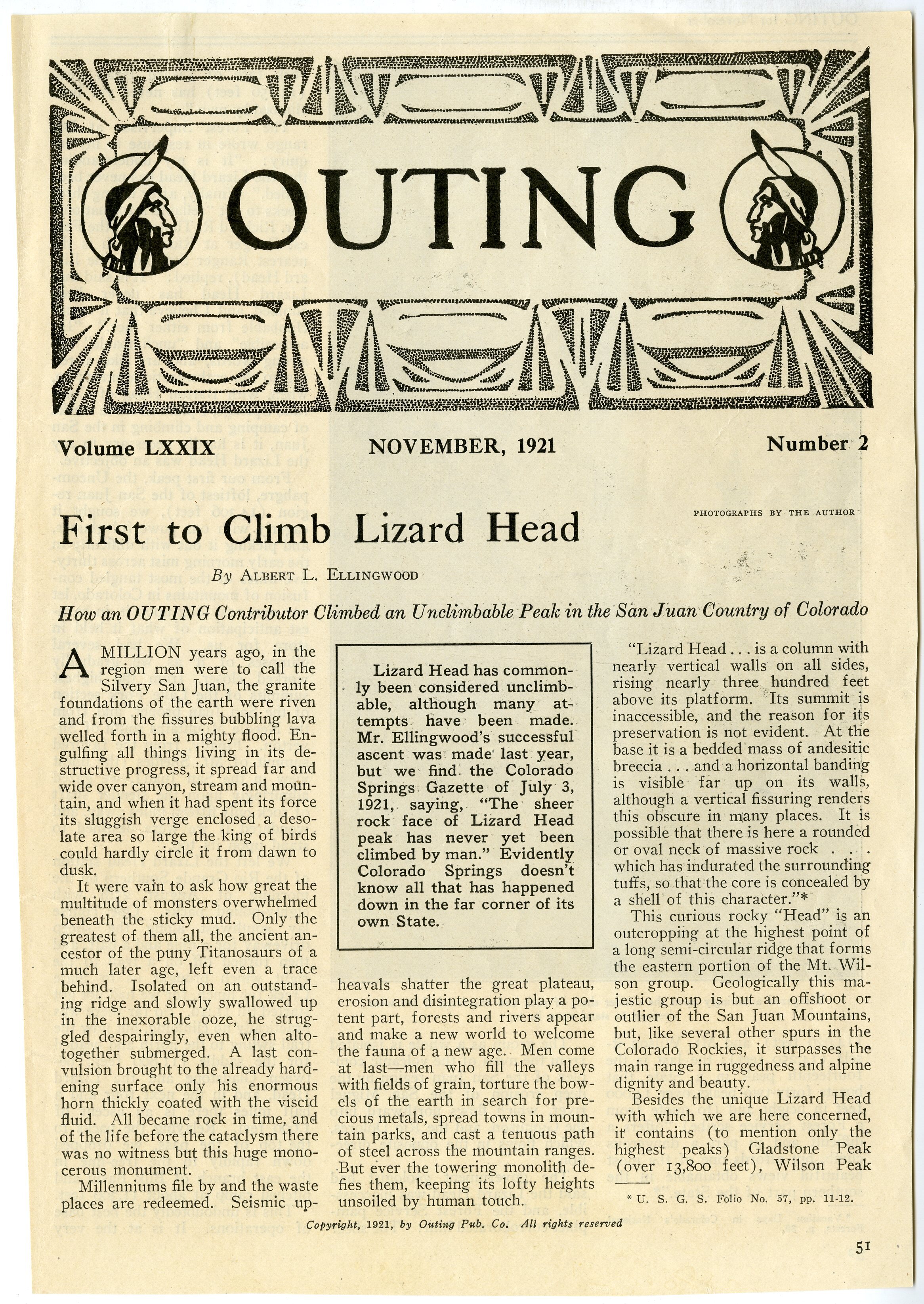
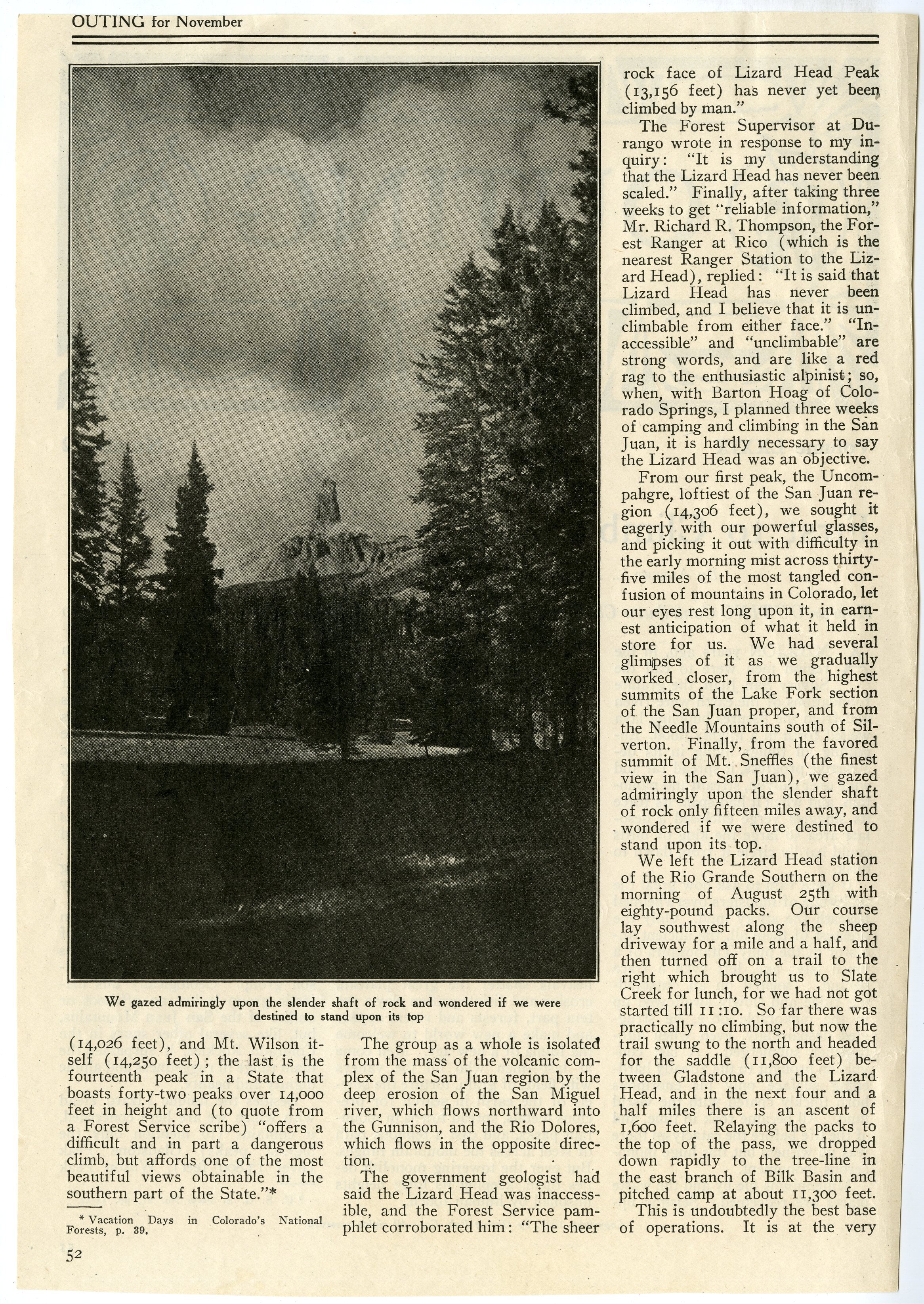

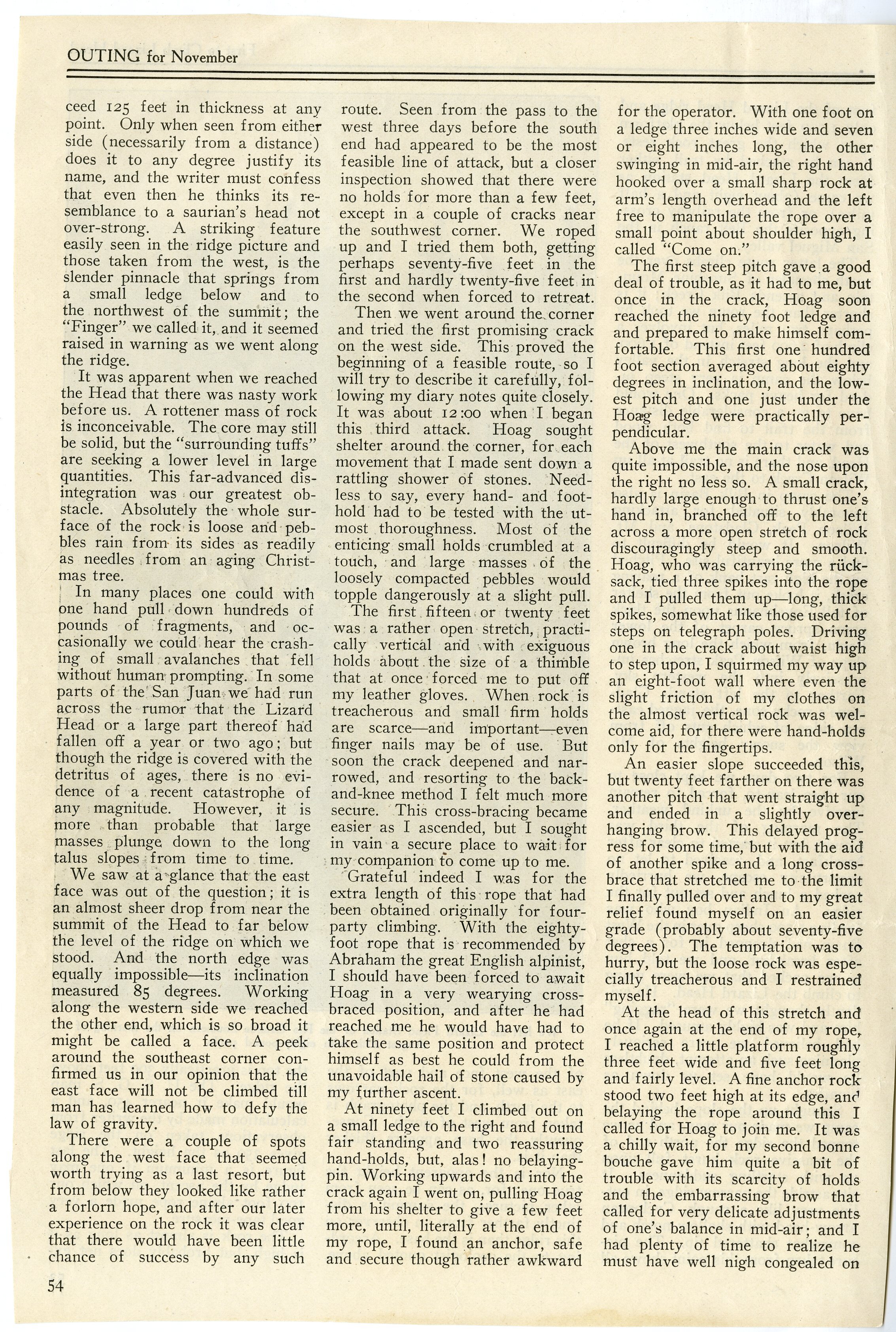
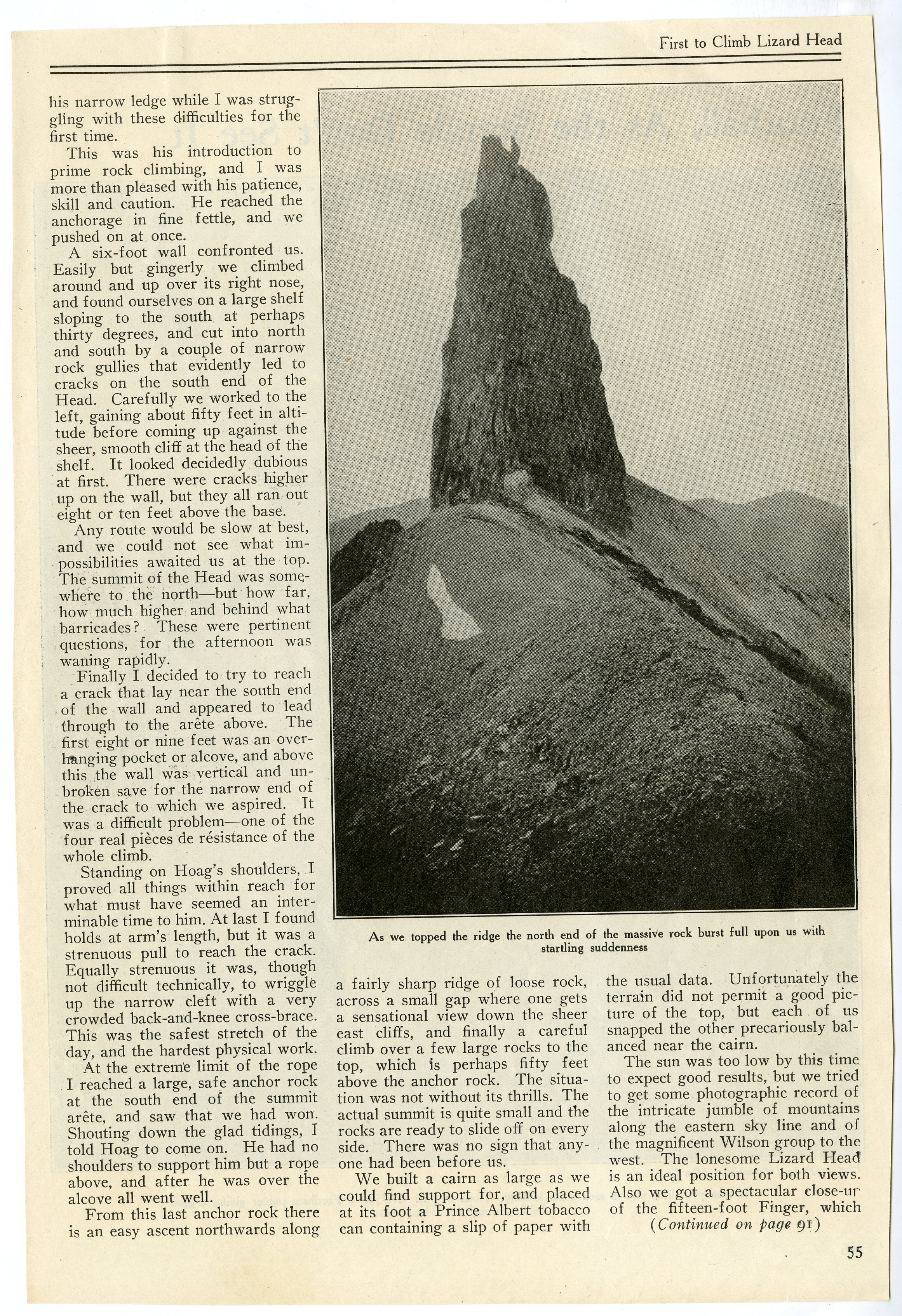
Resources on Albert Ellingwood (all found in the AAC Library)
Archival Material
Albert Ellingwood Collection, American Alpine Club Library.
Eleanor Bartlett Collection, Colorado Mountain Club Collection, AAC Library.
Books
Arnold, Jeff. Albert Ellingwood: Scholar of Summits. Pueblo: My Friend the Printer, 2010.
Burns, Kerry L. and Cameron M., editors. Classic Climbing Stories, Lyons Press, 2005.
Ortenburger, Leigh N. The Grand Teton, 1923: Beginnings of the Modern Era of Mountain Climbing in the Grand Teton National Park; with appendicies by David F. DeLap, Quin A. Blackburn, and Albert R. Ellingwood, 1968.
Articles
Ellingwood, Albert R. “Climbing in the Sangre de Cristo.” Trail & Timberline, no. 81, June 1925, pp. 1-5.
Ellingwood, Albert R. “First to Climb Lizard Head.” Outing, vol. LXXIX, no. 2, November 1921, pp. 51-55, 91-92.
Kramarsic, Joseph D. “An Investigative Trip to Climb Albert Ellingwood's ‘Two Symmetrical Sentinels.’” 14ers.com, 17 June 2019, https://www.14ers.com/php14ers/tripreport.php?trip=19425 Accessed 24 August 2020.
Kramarsic, Joseph D. “"The Ones We Never Got Around To Climbing," Albert Ellingwood and the Twin Peaks, 1916.” 14ers.com, 22 September 2017, https://www.14ers.com/php14ers/tripreport.php?trip=18283 Accessed 24 August 2020.
Kramarsic, Joseph D. “With Albert Ellingwood on Gibbs Peak, Sangre de Cristos, 1916.” 14ers.com, 8 July 2016, https://www.14ers.com/php14ers/tripreport.php?trip=17092 Accessed 24 August 2020.





